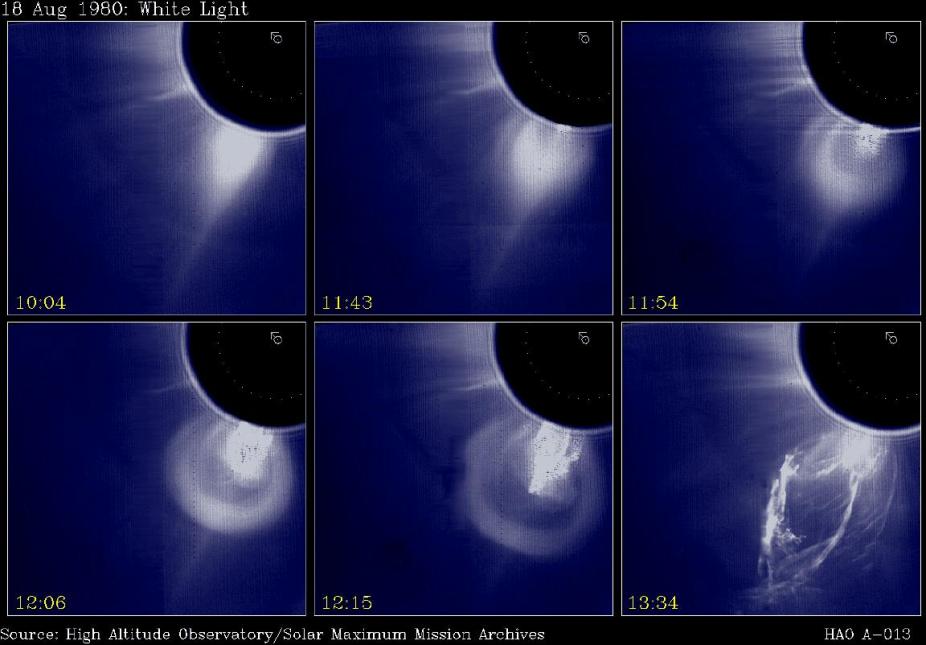A Coronal Mass Ejection
While helmet streamers are long-lived, their demise often occurs abruptly through one of the larger-scale and perhaps most spectacular manifestation of solar activity: coronal mass ejections.

August 18, 1980: White Light image.
In the larger coronal mass ejections, such as the one depicted on this time sequence of images, up to 1013 kg of coronal material may be ejected outward at speeds as high as 1000 kilometers per second (although average values are closer to ~ 1012 kg and 400 km s-1). Prior to its disruption, this helmet streamer (10:04 frame) had been visible for a few days, during which it showed little change in shape or brightness except for a very gradual rise and/or swelling. The transition to a rapid evolutionary phase defines the onset of the coronal mass ejection proper. As this helmet streamer first swells in the initial stages of the ejection, a dark cavity comes into view, within which an erupting prominence can be seen. The prominence material is blown outward along with the original streamer material; the bright, filamentary structures on the 13:10 frame are in fact the remnants of the prominence. Comparison of Hα images taken before and after a coronal mass ejection often reveal the disappearance of a filament originally located along the magnetic neutral line straddled by the disrupted helmet streamer. Note however that not all filaments disappear this way, and not all mass ejections are accompanied by erupting prominences. The dark disk in the upper right corner of each frame is not the solar disk, but the occulting disk of the Solar Maximum Mission (SMM) coronagraph, used to take these images (on this instrument the occulting disk has a radius 60% larger than the solar disk).
Written By P. Charbonneau and O.R. White–April 18, 1995